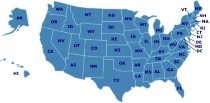Literature Based Curricula
All learning does not need to come through a textbook. In fact, using the world of books, especially "living books," will excite interest in your childen, will bring history alive, and can awaken them to new perspectives and ways of learning.
Resources
Five in a Row
Five in a Row provides a step-by-step, instructional guide using outstanding children's literature for children ages 4-8. Unit studies are built around each chosen book. There is a series for preschoolers called "Before Five in a Row," along with other volumes for older children.
Total Language Plus
Total Language Plus is an innovative curriculum focused on teaching thinking and communication skills using literature as a base. The authors believe an integrated system is more efficient than a fragmented approach, discovery style learning is the most effective and learning should be enjoyable. The "discover, do, drill" method is employed throughout the TLP program with activities focusing on thinking skills. These comprehensive novel studies cover spelling, grammar, punctuation, vocabulary, analytical and critical thinking, comprehension, writing, listening, and field trips and projects.
Beautiful Feet Books
Beautiful Feet Books publishes Rea Berg's "History Through Literature" study guides. They offer fine children's literature, including the D'Aulaire biographies and Genevieve Foster's "World" titles. This is a great resource for anyone wishing to utilize an approach that studies history through literature.
A History of Science
A History of Science is not a textbook, but is a guide to help parents and children study science through literature. It is intended for children in elementary grades.
Featured Resources
As an Amazon Associate, we earn from qualifying purchases. We get commissions for purchases made through links on this site.
A Child's Story of America
This text reads like a story book more than a history textbook. This book has a decidedly Christian bent. Students are given a comprehensive overview of U.S. history from Columbus to the present. Review questions are included throughout, as well as helpful maps. The text contains numerous pictures and large print. An optional test packet and answer key is available.
The Well-Trained Mind: A Guide to Classical Education at Home
This book will instruct you, step by step, on how to give your child an academically rigorous, comprehensive education from preschool through high school. Two veteran home educators outline the classical pattern of education—the trivium—which organizes learning around the maturing capacity of the child's mind: the elementary school "grammar stage," the middle school "logic stage," and the high school "rhetoric stage." Using the trivium as your model, you'll be able to instruct your child in all ...
Kids' Poems (Grades 1)
Regie Routman shares her delightful selection of free verse poems written by first graders that will inspire your second graders to think, I can write poems like this too! Regie provides strategies for using kids' poems as models to guide children to write poems about things they know and care about: learning to skate, disliking asparagus, playing with a best friend, and more. She describes the way she invites children to study the model poem, beginning by asking kids, What do you notice? She sh...
Rhythms of Learning : What Waldorf Education Offers Children, Parents & Teachers (Vista Series, V. 4) (Vista Series, V. 4)
In numerous lectures and through teaching teachers for the first Waldorf school, Rudolf Steiner described and suggested methods of education based on the rhythmic unfolding of spirit, soul, and physiology in children as they grow. In each section of "Rhythms of Learning," Waldorf teacher Roberto Trostli introduces the reader to lectures on specific aspects of children's rhythms of development and how Waldorf education responds. We are shown how Waldorf teachers must, through their own inner capa...
Recovering the Lost Tools of Learning: An Approach to Distinctively Christian Education
Author Douglas Wilson makes the argument that education must have a foundation of religion, which informs worldview. Education is the asking and answering of questions, and learning to read and write is simply the process of acquiring the tools needed to do that.




